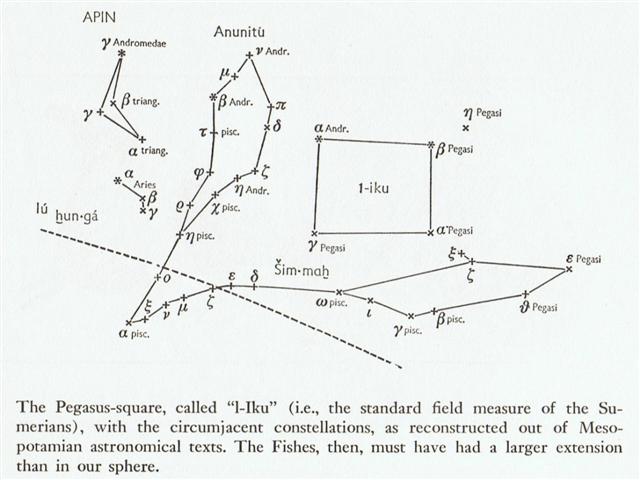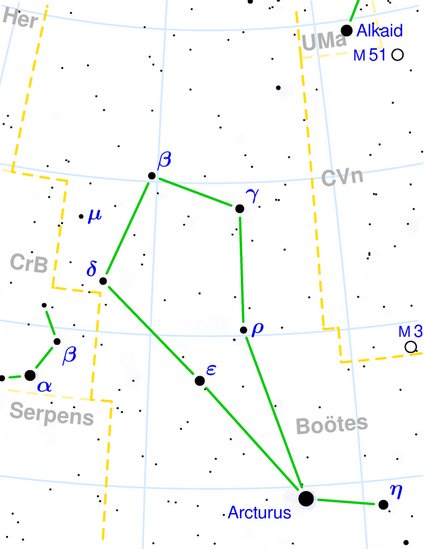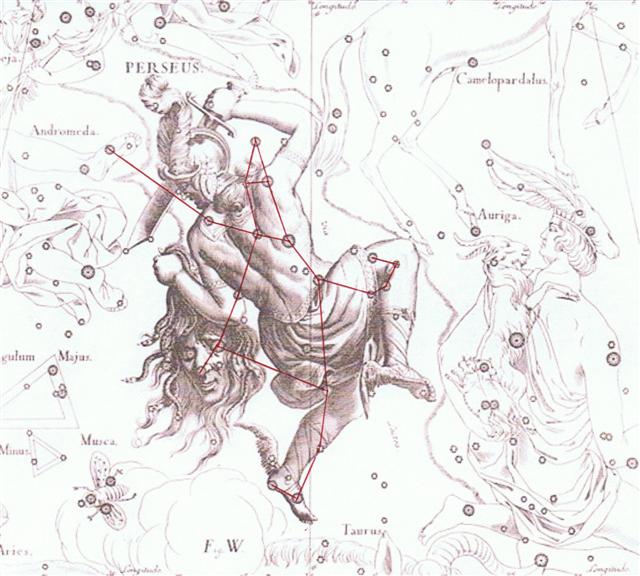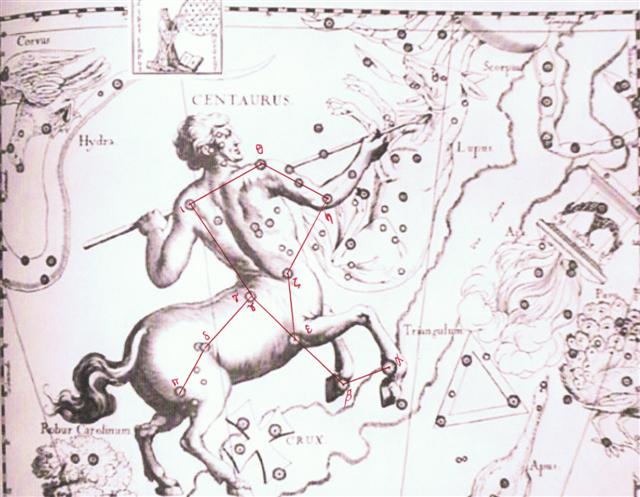432. Once again. Looking each month at
the stars close to the face of the Full Moon (Hotu)
-
perfectly rounded as a ripe fruit - it could be inferred where
the Sun was at present, viz. at the opposite side of the
sky.
|
no glyph |
 |
 |
 |
 |
 |
 |
|
Ca1-1 |
Ca1-2 |
Ca1-3 |
Ca1-4 |
Ca1-5 |
Ca1-6 |
|
Sept 20 |
21 (264) |
Equinox |
23 |
24 (☼183) |
25 (*5 + *183) |
26 (☼185) |
|
"Aug 10 (222) |
11 |
12 (265 - 41) |
13 (15 * 15) |
14 |
(227 = 268 - 41) |
16 (*148) |
|
CLOSE TO
THE FULL MOON: |
|
Al Fargh al Thāni-25 (Rear Spout)
0h (365.25)
CAPH (Hand) =
β
Cassiopeiae,
SIRRAH (Navel of the Horse) =
α
Andromedae
(0.5),
ε
Phoenicis,
γ³
Oct.
(0.8) |
Uttara Bhādrapadā-27 (2nd of the Blessed
Feet) /
Wall-14 (Porcupine)
ο Oct. (1.3),
ALGENIB PEGASI = γ Pegasi
(1.8) |
χ Pegasi (2.1), θ Andromedae (2.7) |
σ Andromedae (3.0), ι Ceti (3.3), ζ Tucanae
(3.5), ρ Andromedae, π Tucanae (3.7) |
no star listed (4) |
ANKAA = α Phoenicis,
κ Phoenicis (5.0)
ALPHARD (α Hydrae)
|
λ Phoenicis (6.3), β Tucanae (6.4) |
|
CLOSE TO THE SUN: |
|
ALCHITA = α Corvi,
MA WEI (Tail of the Horse) = δ Centauri
(183.1),
MINKAR = ε Corvi
(183.7), ρ Centauri (183.9) |
PÁLIDA (Pale) =
δ
Crucis
(184.6),
MEGREZ (Root of the Tail) =
δ
Ursae Majoris
(184.9) |
Hasta-13 (Hand) /
Chariot-28 (Worm)
GIENAH (Wing) =
γ
Corvi
(185.1),
ε
Muscae (185.2),
ζ
Crucis (185.4),
ZANIAH (Corner) =
η
Virginis
(185.9)
*144.0 = *185.4 - *41.4 |
CHANG SHA (Long Sand-bank) =
ζ
Corvi
(186.3) |
INTROMETIDA (Inserted) =
ε
Crucis
(187.4),
ACRUX =
α
Crucis
(187.5)
*146.0 = *187.4 - *41.4 |
γ
Com. Berenicis (188.0),
σ
Centauri (188.1),
ALGORAB =
δ
Corvi
(188.5),
GACRUX =
γ
Crucis
(188.7) |
γ
Muscae (189.0),
AVIS SATYRA (Bird of the
Satyrs) =
η
Corvi
(189.3),
ASTERION (Starry) =
β
Canum Ven.
(189.5),
KRAZ = β Corvi,
κ Draconis (189.7) |

... Raven gazed up and down the beach. It
was pretty, but lifeless. There was no one
about to upset, or play tricks upon. Raven
sighed. He crossed his wings behind him and
strutted up and down the sand, his shiny
head cocked, his sharp eyes and ears alert
for any unusual sight or sound. The
mountains and the sea, the sky now ablaze
with the sun by day and the moon and stars
he had placed there, it was all pretty, but
lifeless. Finally Raven cried out to the
empty sky with a loud exasperated cry. And
before the echoes of his cry faded from the
shore, he heard a muffled squeak. He looked
up and down the beach for its source and saw
nothing. He strutted back and and forth,
once, twice, three times and still saw
nothing. Then he spied a flash of white in
the sand. There, half buried in the sand was
a giant clamshell. As his shadow fell upon
it, he heard another muffled squeak. Peering
down into the opening between the halves of
the shell, he saw it was full of tiny
creatures, cowering in fear at his shadow
... |
|
70 |
FEBR 5 (36) |
6 (37 = 78 - 41) |
7 (118 - 80) |
307 |
|
... the Palenque scribes repeated Creation
again and described it as 'it was made
visible, the image at Lying-down-Sky, the
First-Three-Stone-Place'. Then we learned
that five hundred and forty-two days later
(1.9.2 in the Maya system), Hun-Nal-Ye
'entered or became the sky' (och ta chan).
This 'entering' event occurred on February
5, 3112 BC ... |
 |
 |
 |
|
Ca4-1 (77) |
Ca4-2 |
Ca4-3 |
|
kua tupu te rakau |
kua tupu - te kihikihi |
te hau tea |
|
Tupu.
1. Shoot, sprout,
bud; to sprout, to bud. 2. Pregnant: vî'e
tupu (o te poki); to be conceived (of
fetus in its mother's womb): he-tupu te
poki i roto i te kopú o toona matu'a.
Vanaga. To grow, to sprout, to germinate, to
come forth, to conceive, pregnant, germ;
mea tupu, plant; tupu ke avai, of
rapid growth; tupu horahorau,
precocious; hakatupu, to produce, to
stimulate growth, to excite. P Pau.:
fakatupu, to raise up, to create. Mgv.:
tupu, to grow, to conceive, to be
pregnant. Mq.: tupu, to grow, to
sprout, to conceive. Ta.: tupu, to
grow, to sprout. Churchill. Mgv.: Tupu,
the best or worst, used of men or of bad
qualities. Sa.: tupu, king. Ma.:
tupu, social position, dignity.
Churchill. |
|
CLOSE TO
THE FULL MOON: |
|
μ Aurigae, μ Leporis (77.6) |
ĸ Leporis (78.0),
RIGEL (Foot) = β Orionis
(78.1),
Flaming Star = IC405
(78.2),
CAPELLA (Little Goat) = α Aurigae
(78.4), ο Columbae, τ Orionis (78.8)
*37.0 = *78.4 - *41.4
THUBAN (α Draconis)
|
λ Aurigae (79.0), λ Leporis (79.6), ρ
Aurigae (79.7)
ARCTURUS (α
Bootis)
|
|
... In view of the almost universal
prevalence of the Pleiades year throughout
the Polynesian area it is surprising to find
that in the South Island and certain parts
of the North Island of New Zealand and in
the neighboring Chatham Islands, the year
began with the new Moon after the yearly
morning rising, not of the Pleiades, but of
the star Rigel in Orion
... |
|
June 6 (157 = 314 / 2) |
7 (*78) |
8 |
|
'May 10 (*50 = *77 - * 27) |
11 |
12 (132 = 118 + 14) |
|
"April 26 (*36 = *77 - *41) |
27 |
28 (118) |
|
APRIL 3 (*13 = *77 - *64) |
4 |
5 (95 = 118 - 23) |
|
CLOSE TO THE SUN: |
|
Dec 6 (340 = 157 + 183) |
7 (*261 = *78 + *183) |
8 |
|
NODUS I = ζ Draconis
(260.0), π Herculis (260.7),
RAS ALGETHI = α Herculis
(260.8) |
SARIN = δ Herculis
(261.0), ο Ophiuchi (261.4)
*220.0 = *261.4 - *41.4
ALRISHA (α Piscium)
|
ξ Ophiuchi (262.2), θ
Ophiuchi, ν Serpentis, ζ, ι Apodis (262.4),
ι Arae (262.8), ρ Herculis (262.9)
*221.0 = *262.4 - *41.4 |
 |
 |
 |
 |
 |
 |
|
*Ca14-24 |
*Ca14-25 |
*Ca14-26 |
*Ca14-27 |
*Ca14-28 |
*Ca14-29 (392) |
|
CLOSE TO
THE FULL MOON: |
|
11 (159 + 308 -
366) |
April 12 (286 - 184) |
13 (468 = 365 + 103) |
14 (104 =
☼20) |
15 |
16 (392 - 366 + 80) |
|
δ Phoenicis (21.5)
*79 + *308 - *366 = *21 |
υ Andromedae (22.9) |
ACHERNAR (End of the River) = α Eridani
(23.3), χ Andromedae (23.6), τ Andromedae
(23.9) |
ALSEIPH (Scimitar) = φ Persei
(24.5), τ Ceti (24.7) |
no star listed (25) |
ANA-NIA-10 (Pillar-to-fish by)
χ
Ceti (26.1),
POLARIS = α Ursae Minoris, BATEN KAITOS
(Belly of the Fish) = ζ Ceti
(26.6),
METALLAH = α Trianguli
(26.9) |

... You are the one who shall stay here. We,
on the other hand, have to turn around.
Makoi replied, All right with me! Then
Ira continued to speak to Makoi:
Tomorrow, when it grows light, set out and
name the places beginning with Apina.
Makoi replied, How shall I give the
names? Again Ira spoke, In Hiva
are the names that are to be taken to name
(the places of the new land). It grew light
and Makoi got up. He set out and came
to Apina. When he arrived there, he
gave the name This is Apina Iti, this is
Rapa Kura. He went on and came to
Hanga O Ua. He gave the name This is
Hanga O Ua of the Beautiful Wave (vave
renga). Makoi went on, giving
names, until he had made a (complete) circle
around both sides (of the island). In
Apina Nui a stone (maea) was
erected, saying that the naming was done on
a (round) trip during a single day
...
 |
|
CLOSE TO THE SUN: |
|
12 (342 + 308 - 365) |
Oct 13 (286) |
14 |
15 (288 =
☼204) |
16 |
17 (392 + 80 - 182) |
|
... The canoes of Ava Rei Pua and of
Hotu were seen near the (off-shore)
islets. On the fifteenth day of the month
of October (tangaroa uri)
the canoe of Hotu and the canoe of
Ava Rei Pua landed. On the fifteenth day
of the month of October (tangaroa
uri), Nonoma left the house
during the night to urinate outside. At this
point Ira called out to Nonoma,
'Look at the canoe!' Nonoma ran, he
quickly went to Te Hikinga Heru (a
ravine in the side of the crater Rano Kau)
and looked around. There he saw the double
canoe way out near the (offshore) islets,
and the two (hulls of the canoe) were lashed
together. He ran and returned to the front
of the house. He arrived and called into the
house: 'Hey you! This canoe has arrived
during the night without our noticing it!'
Ira asked Nonoma, 'Where is
the canoe, which you say is lying out there
(in the water)?' Nonoma's voice came
back: 'It is out there (in the water) close
to the (offshore) islets! There it lies, and
the two (hulls) are lashed together.' The
four of them (corrected for 'the six of
them') went out and picked up leaves (on
branches) to give signals. They picked them
up, went and arrived at Te Hikinga
and saw the canoe. Raparenga got up,
picked up the leaves, took them in his
hands, and waved, waved, waved, waved ...
(E:75) |
|
HEZE =
ζ
Virginis
(205.0),
Southern Pinwheel Galaxy = M83 Hydrae
(205.7) |
ε Centauri (206.3), κ Oct. (206.4) |
no star listed (207) |
τ
Bootis (208.2),
BENETNASH (Leader of the Daughters of the
Bier) =
η
Ursae Majoris
(208.5),
ν
Centauri (208.7),
μ
Centauri,
υ
Bootis (208.8) |
no star listed (209) |
MUPHRID (Solitary Star) = η Bootis
(210.1), ζ Centauri (210.3) |
Metallah was closse to the pair Polaris
and Baten Kaitos and when this triplet (together with
χ Ceti) was close to
the current right ascension line at the Full
Moon then the present position of the Sun should be
in day 106 + 184 = 290, viz. at Muphrid (the Solitary
Star).

Or one could go in the opposite
direction, e.g. from October 15 (288) at Benetnash to
right ascension line *208 - *184 = *104 at the Scimitar
(stretching all the way to the right foot of Andromeda):

The picture in Ca4-1 (→ 41 → Bharani →
Yoni) was probably intended as a drawing of the main stars of Auriga,
with Elnath (the Butting One) at the bottom and with Capella
(the little goat mother) at
the top:


The Milky Way river runs down between
Capella and Elnath and 6h corresponds to day 80 + 6h / 24h *
(365.25 - 80) = 151 (May 31) = 115 (→ Mercury) + 36
(February 5).
|
Synodic cycles |
|
Mercury |
115.88 |
|
Venus |
583.92 |
|
Earth |
364.0 = π * 115.88 |
|
Mars |
779.96 |
|
Jupiter |
398.88 |
|
Saturn (Makoi) |
378.09 |
|
Uranus |
369.66 |
At this important place in the C text we
can correlate the glyphs with what could be observed
close to the Full Moon. This is evidently a place where the
'Summer Horse' of the Sun could have vanished (in
October 15, 288 = 2 * 144, corresponding to April 14 on Easter
Island) and were the Charioteer (Le Chartier, Auriga)
therefore was looking back towards his past.
|
ALSEIPH (Scimitar) = φ Persei |
|
October 15 |
288 |
*208 |
|
April 14 |
288 + 181 |
*390 |
... I have assumed the Easter Islanders
used calendar systems and other ideas transferred intact
from their ancient homeland (Hiva) when naming
the corresponding features after having arrived to their
new homeland. It would be easy to look at the face of
the Full Moon in order to find the stars which defined
the seasons of the Sun as found out north of the
equator. Therefore day zero (0h) should be directly
before the beginning of the text where
γ Pegasi marked day 264 -
i.e. at the first day after 'the Year of the Horse'
(from Sirrah, the Navel, up to and including her tail,
Ma Wei) which
seems to have stretched for 184 days of summer grasses.
The Navel of the
Horse (its place of birth) was at 0h and from there to
May 31 there were *71 (= 366 - 295 = 26000 / 362.25)
right ascension days. The corresponding season on Easter
Island stretched from the day when the Sun reached the
Tail of the Horse
(Ma Wei, δ Centauri) in September 22 (265) and to
day 265 + 71 = 336 (December 2) = right ascension day
336 - 80 = *256 (= 16 * 16).

|
Sirrah |
May 31 |
113 |
Ma Wei |
Dec 2 |
|
80 = 0h |
151 (*71) |
265 (*185) |
336 = 80 +
16 * 16 |
|
 |
Day 336 (= 4 * 84) was 5 days before December 7:
|
JAN 31 |
FEBR 1 (32 = 73 - 41) |
2 |
3 |
4 (115 - 80) |
 |
 |
 |
 |
 |
|
Ca3-21 (→ March 21 → Gregorian equinox) |
Ca3-22 (73) |
Ca3-23 |
Ca3-24 |
Ca3-25 (→
March 25→ Julian equinox) |
|
tagata tuu rima ki
ruga |
te maitaki |
te henua |
Rei hata ia |
tagata rogo |
|
Hata.
1. Table,
bureau. P Pau.: afata, a chest,
box. Mgv.: avata, a box, case,
trunk, coffin. Mq.: fata, hata,
a piece of wood with several branches
serving as a rack, space, to ramify, to
branch; fataá, hataá,
stage, step, shelf. Ta.: fata,
scaffold, altar. 2. Hakahata, to
disjoint; hakahatahata, to
loosen, to stretch. P Pau.: vata,
an interval, interstice. Mgv.: kohata,
the space between two boards, to be
badly joined; akakohata, to leave
a space between two bodies badly joined;
hakahata, to be large, broad,
wide, spacious, far off. Mq.:
hatahata, fatafata, having
chinks, not tightly closed, disjointed.
Ta.: fatafata, open. 3.
Hatahata, calm, loose, prolix, vast.
Mgv.: hatahara, broad, wide,
spacious, at one's ease. Ta.:
fatafata, free from care. Mq.:
hatahata, empty, open. 4.
Hatahata, tube, pipe, funnel.
Churchill. Sa.: fata, a raised
house in which to store yams, a shelf, a
handbarrow, a bier, a litter, an altar,
to carry on a litter; fatāmanu,
a scaffold. To.: fata,
a loft, a bier, a handbarrow, to carry
on a bier; fataki,
a platform. Fu.: fata,
a barrow, a loft; fatataki,
two sticks or canes attached to each
other at each side of a house post to
serve as a shelf. Niuē: fata,
a cage, a handbarrow, a shelf, a stage,
(sometimes) the upper story of a house.
Uvea: fata,
a barrow, a bier. Fotuna: fata,
a stage. Ta.: fata,
an altar, a scaffold, a piece of wood
put up to hang baskets of food on;
afata,
a chest, a box, a coop, a raft, a
scaffold. Pau.: fata,
a heap; afata,
a box, a chest. Ma.: whata,
a platform or raised storehouse for
food, an altar, to elevate, to support.
Moriori: whata,
a raft. Mq.: fata,
hata,
hataá,
shelves. Rapanui: hata,
a table. Ha.: haka,
a ladder, an artificial henroost;
alahaka,
a ladder. Mg.: ata,
a shelf; atamoa,
a ladder; atarau,
an altar. Mgv.: avata,
a coffer, a box. Vi.: vata,
a loft, a shelf; tāvata,
a bier. The Samoan fata
is a pair of light timbers pointed at
the ends and tied across the center
posts of the house, one in front, the
other behind the line of posts; rolls of
mats and bales of sennit may be laid
across these timbers; baskets or
reserved victuals may be hung on the
ends. The litter and the barrow are two
light poles with small slats lashed
across at intervals. The Marquesan
fata
is a stout stem of a sapling with the
stumps of several branches, a hat tree
in shape, though found among a barehead
folk. These illustrations are sufficient
to show what is the common element in
all these fata
identifications, light cross-pieces
spaced at intervals. With this for a
primal signifaction it is easy to see
how a ladder, a raft, a henroost, an
altar come under the same stem for
designation. Perhaps Samoan
fatafata
the breast obtains the name by reason of
the ribs; it would be convincing were it
not that the plumpness of most Samoans
leaves the ribs a matter of anatomical
inference. Churchill 2. ...
Teke said to Oti, 'Go and
take the hauhau tree, the paper
mulberry tree, rushes, tavari
plants, uku koko grass, riku
ferns, ngaoho plants, the
toromiro tree, hiki kioe
plants (Cyperus vegetus), the
sandalwood tree, harahara plants,
pua nakonako plants, nehenehe
ferns, hua taru grass, poporo
plants, bottle gourds (ipu ngutu),
kohe plants, kavakava atua
ferns, fragrant tuere heu grass,
tureme grass (Diochelachne
sciurea), matie grass, and
the two kinds of cockroaches makere
and hata.'
... The division
into quarters of a 28-series can be
applied to the main phases of the moon
during the visible period as was as to a
(reflex of the old world?) sidereal
month.
The separate subgroup (29
makere - 30 hata) consists of
the names of two types of cockroaches,
but in related eastern Polynesian
languages these names can also be
explained on a different level. MAO.
makere, among others, 'to die', and
whata, among others, 'to be laid
to rest on a platform', deserve special
attention.
The theme hinted at is one of
death and burial. In our scheme they
occur at just that time when the moon
'has died'! This lends further support
to the lunar thesis.
Barthel 2.
 |
|
CLOSE TO
THE FULL MOON: |
|
π4 Orionis (72.1), ο¹ Orionis (72.4), π5
Orionis (72.8) |
π¹ Orionis (73.0), ο² Orionis (73.4),
HASSALEH = ι Aurigae
(73.6), π6 Orionis (73.9) |
ALMAAZ (The Male Goat) = ε Aurigae
(74.7),
HAEDUS I = ζ Aurigae
(74.8) |
HAEDUS II = η Aurigae
(75.9) |
5h (76.1)
ε Leporis (76.0),
CURSA = β Eridani
(76.4), λ Eridani (76.7) |
 |
|
CLOSE TO THE SUN: |
|
Dec 1 |
2 |
3 |
4 |
5 |
|
Ophiuchi (255.3),
GRAFIAS (Claws) =
ζ
Scorpii
(255.4) |
κ
Ophiuchi (256.2),
ζ
Arae (256.5),
ε
Arae (256.8),
CUJAM (Club) =
ε
Herculi
(256.9) |
no star listed (257) |
17h (258.7)
ARRAKIS = μ Draconis
(258.7) |
Mula-19 (The Root)
SABIK (The Preceding One) = η Ophiuchi
(259.7), η Scorpii (259.9) |
|
FEBR 5 (36) |
6 (37 = 78 - 41) |
7 (118 - 80) |
|
... the Palenque scribes repeated Creation
again and described it as 'it was made
visible, the image at Lying-down-Sky, the
First-Three-Stone-Place'. Then we learned
that five hundred and forty-two days later
(1.9.2 in the Maya system), Hun-Nal-Ye
'entered or became the sky' (och ta chan).
This 'entering' event occurred on February
5, 3112 BC ... |
 |
 |
 |
|
Ca4-1 (77) |
Ca4-2 |
Ca4-3 |
|
kua tupu te rakau |
kua tupu - te kihikihi |
te hau tea |
|
Tupu.
1. Shoot, sprout,
bud; to sprout, to bud. 2. Pregnant: vî'e
tupu (o te poki); to be conceived (of
fetus in its mother's womb): he-tupu te
poki i roto i te kopú o toona matu'a.
Vanaga. To grow, to sprout, to germinate, to
come forth, to conceive, pregnant, germ;
mea tupu, plant; tupu ke avai, of
rapid growth; tupu horahorau,
precocious; hakatupu, to produce, to
stimulate growth, to excite. P Pau.:
fakatupu, to raise up, to create. Mgv.:
tupu, to grow, to conceive, to be
pregnant. Mq.: tupu, to grow, to
sprout, to conceive. Ta.: tupu, to
grow, to sprout. Churchill. Mgv.: Tupu,
the best or worst, used of men or of bad
qualities. Sa.: tupu, king. Ma.:
tupu, social position, dignity.
Churchill. |
|
CLOSE TO
THE FULL MOON: |
|
μ Aurigae, μ Leporis (77.6) |
ĸ Leporis (78.0),
RIGEL (Foot) = β Orionis
(78.1),
Flaming Star = IC405
(78.2),
CAPELLA = α Aurigae
(78.4), ο Columbae, τ Orionis (78.8)
*37.0 = *78.4 - *41.4
THUBAN (α Draconis)
|
λ Aurigae (79.0), λ Leporis (79.6), ρ
Aurigae (79.7)
ARCTURUS (α
Bootis)
|
|
... In view of the almost universal
prevalence of the Pleiades year throughout
the Polynesian area it is surprising to find
that in the South Island and certain parts
of the North Island of New Zealand and in
the neighboring Chatham Islands, the year
began with the new Moon after the yearly
morning rising, not of the Pleiades, but of
the star Rigel in Orion
... |
|
June 6 (157 = 314 / 2) |
7 (*78) |
8 |
|
'May 10 (*50 = *77 - * 27) |
11 |
12 (132 = 118 + 14) |
|
"April 26 (*36 = *77 - *41) |
27 |
28 (118) |
|
APRIL 3 (*13 = *77 - *64) |
4 |
5 (95 = 118 - 23) |
|
CLOSE TO THE SUN: |
|
Dec 6 (340 = 157 + 183) |
7 (*261 = *78 + *183) |
8 |
|
NODUS I = ζ Draconis
(260.0), π Herculis (260.7),
RAS ALGETHI = α Herculis
(260.8) |
SARIN = δ Herculis
(261.0), ο Ophiuchi (261.4)
*220.0 = *261.4 - *41.4
ALRISHA (α Piscium)
|
ξ Ophiuchi (262.2), θ
Ophiuchi, ν Serpentis, ζ, ι Apodis (262.4),
ι Arae (262.8), ρ Herculis (262.9)
*221.0 = *262.4 - *41.4 |

|




















